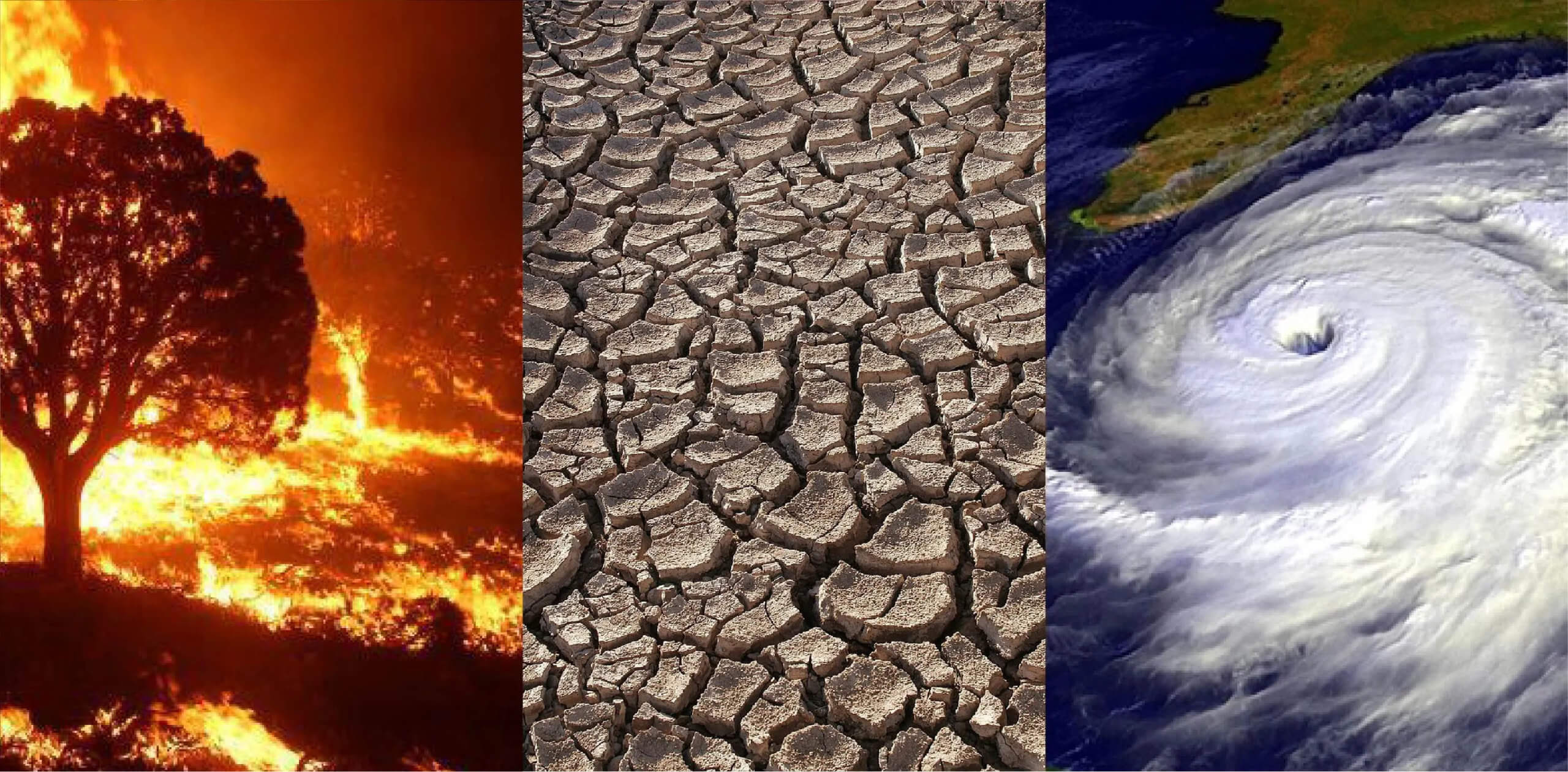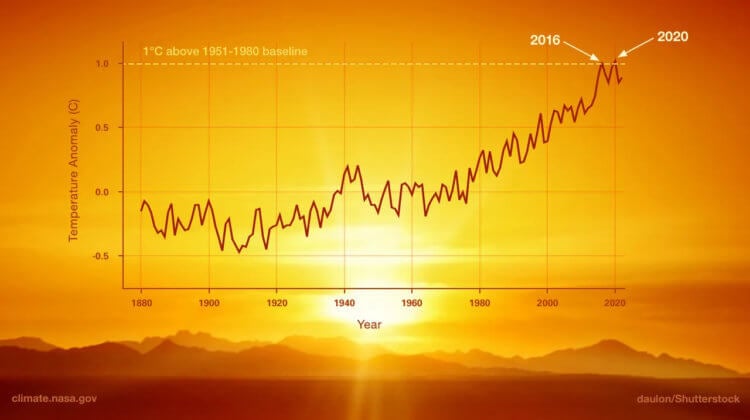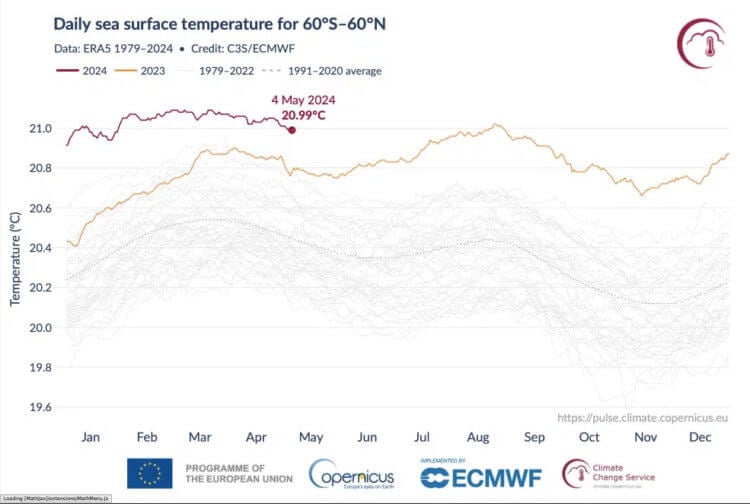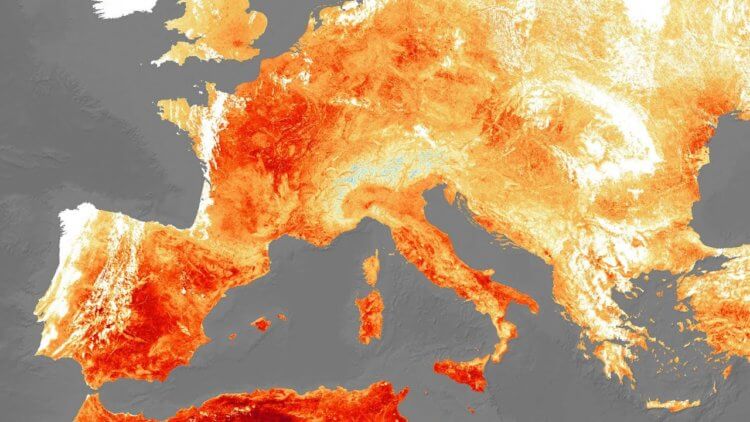Climate change is already having an impact on everyday life, including health and the ecosystems on which we depend. The situation is complicated by the fact that even reducing global carbon dioxide emissions is unlikely to change the situation – floods, droughts, heat waves and other dangerous climate-related events are (and will become) more intense and lasting. To date, extreme weather events have caused between 85,000 and 145,000 deaths across Europe over the past 40 years. More than 85% of these deaths were caused by heat waves, and according to a recently released report from World Weather Attribution and Climate Central, nearly the entire global population has been affected by extreme heat caused by human-caused climate change. Thus, over the past 12 months, in all corners of the world, an average of 26 days were «excess» days of extreme heat.

Extreme heat is on the rise around the world. Image: www.princeton.edu
Contents
- 1 There are more abnormally hot days in the world
- 2 How heat affects the body
- 3 Mortality and natural disasters
- 3.1 Fossil fuels
There are more abnormally hot days around the world
According to a report published at the end of May by Climate Central, the Red Climate Center Cross and Red Crescent and World Weather Attribution (WWA), 6.3 billion people – about 78% of the world's population – experienced at least 31 days of heat waves in the last 12 months, the likelihood of which due to anthropogenic climate change has at least doubled.
So, between May 15, 2023 and May 15, 2024, 76 extreme heat waves occurred in 90 countries. These include regions of the Global South, from the Sahel and Horn of Africa to Thailand, Myanmar, Vietnam and the Philippines in Southeast Asia and Argentina, Brazil, Paraguay and Bolivia in South America. The report classifies extreme heat days as days when temperatures exceed 90% of the daily temperatures recorded at a given location between 1991 and 2020.

The consequences of climate change are already being felt today. Image: Nasa.com
Man-made climate change is increasing extreme heat around the world, affecting billions of people and threatening food and water security, report says.
2023 is known to have been the hottest year on record, helped in large part by El Niño, which has dramatically increased temperatures around the world. Despite a gradual weakening, global temperatures have continued to rise this year, with April marking the 11th consecutive month of record-breaking temperatures.
Read more: Brace Yourself for Record-Breaking Summer Heat
The results of the study showed that over the past 12 months, due to climate change, the world has experienced an average of 26 more days of extremely hot days, which would not have happened in the absence of global warming. However, in some countries the number of hot days has increased exponentially: in South America, Suriname had 158 extreme hot days, Ecuador 170, El Salvador 148, Guyana 141 and Panama 137.
How heat affects the body
Heat waves are spreading rapidly across the world, affecting billions of people, and a growing number of studies point to climate change as a driving factor. According to the Intergovernmental Panel on Climate Change (IPCC), with continued global warming, we can expect an increase in the intensity, frequency and duration of heat waves.
Extreme heat has negative impacts on human health, especially affecting vulnerable populations, including the elderly, pregnant women, infants, athletes and those who work outdoors.

The number of abnormally hot days in the world is growing every year. Image: science.nasa.gov
Read even more articles about the latest discoveries in the field of science and high technology on our channel in Yandex.Zen – articles that are not on the site are regularly published there!
The stress that heat places on the body interferes with normal daily activities and our ability to cool down properly. Humid areas can also be life-threatening. Sweat helps our bodies cool down, but humidity changes the way sweat evaporates from the body. Not being able to cool down puts people's health at risk and can lead to cardiovascular and respiratory problems, dehydration, heat stroke, high blood pressure, and sleep deprivation.
Mortality and natural disasters
An assessment by the Copernicus Climate Change Service (C3S) and the World Meteorological Organization (WMO) in April 2024 found that heat-related deaths in Europe, where warming is occurring twice as fast as any other continent, have increased by around 30% over the past two decades, while heat-related deaths are estimated to have increased in 94% of the European regions monitored.
Excess heat also negatively impacts water and food resources and threatens both terrestrial and marine ecosystems. Recent sea heat waves and near-record ocean temperatures.

Extreme heat kills. Image: grist.org
This is interesting: Forests stop absorbing carbon – the reason is climate change
Steadily rising ocean temperatures have negatively impacted coral reefs around the world, leading to the fourth global coral bleaching event in history and the second this decade. These important ecosystems support at least 25% of marine species and are integral to maintaining Earth's vast and interconnected network of marine biodiversity and provide ecosystem services valued at up to $9.9 trillion annually.
Floods and hurricanes may make headlines, but the effects of extreme heat are equally deadly, says Jagan Chapagain, secretary general of the International Federation of Red Cross and Red Crescent Societies (IFRC).
 Mean daily sea surface temperature (°C) averaged over the extrapolar global ocean (60°S-60°N ) for 2023 (orange) and 2024 (dark red). Data source: ERA5. Image: C3S/ECMWF.
Mean daily sea surface temperature (°C) averaged over the extrapolar global ocean (60°S-60°N ) for 2023 (orange) and 2024 (dark red). Data source: ERA5. Image: C3S/ECMWF.
The world is now 1.2°C warmer than pre-industrial times, although data suggests that 20–40% of the world's population lives in regions that had already experienced more than 1°C of warming by the 2006–2015 decade. .5°C in at least one season.
According to the IPCC, every 0.5°C of global warming resultsin a marked increase in the frequencyand intensity of extreme temperatures, heavy precipitation and regional droughts.
Fossil fuels
Burning coal, natural gas and oil to produce electricity and heat is the largest source of global greenhouse gas emissions, which are the main drivers of global warming by trapping heat in the atmosphere and raising the Earth's surface temperature.
Over the past 50 years, global consumption fossil fuels have more than doubled as countries around the world strive to improve their living standards and economic growth. In 2023, all three of the most powerful greenhouse gases—carbon dioxide (CO2), methane and nitrous oxide—reached record levels.

The planet is rapidly heating up. Image: www.wearewater.org
You may be interested: The Gulf Stream may disappear in 2025 – what are the risks?
The International Energy Agency (IEA) has called on countries to stop building new gas and oil fields, arguing that this is the only way to keep a net zero emissions scenario consistent with 1.5 degrees Celsius in place.